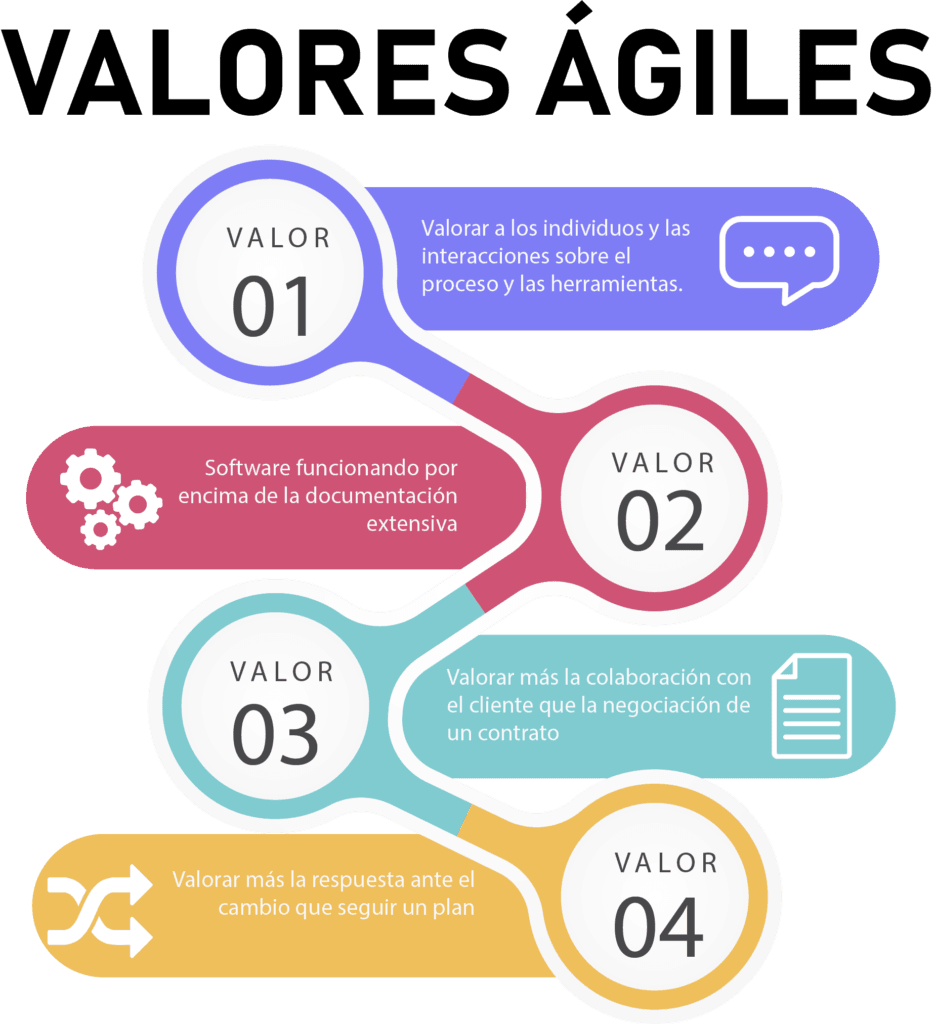In the world of software development, there’s a term that’s being mentioned more and more: Agile Development. But what does it really mean to work in an agile way? Is it just a passing trend, or does it truly transform how we build technology? Spoiler alert: yes, it does, and in this post, I’ll tell you why.
It all began in 2001, when a group of software experts gathered to rethink how technological projects were developed. From that meeting, the Agile Manifesto was born—a document that is not a rigid manual, but rather a declaration of principles that prioritize people, collaboration, and adaptability over strict processes.
The manifesto is based on four pillars:
- Individuals and interactions over processes and tools.
- Working software over comprehensive documentation.
- Customer collaboration over contract negotiation.
- Responding to change over following a plan.

Working in an agile way doesn’t mean using a specific tool or following a set of predefined steps. Instead, it’s about adopting a flexible mindset that allows adaptation to change, delivering constant value, and fostering effective communication within teams.
Rather than developing a complete product over months (or years) before launching it, agile development is based on short iterations and deliverables. Each of these iterations—known as “sprints” in methodologies like Scrum—allows the team to test, adjust, and improve the product in real time, incorporating constant feedback from the client or end user.
Why is Agile so popular?
- Because of its extreme adaptability:
Traditional development (known as “waterfall”) is rigid; once requirements are defined, changing something can be a headache. Agile development, on the other hand, embraces change. If the client needs to adjust something along the way, no problem—the team incorporates it into the next iteration. - Because of the speed at which visible results are generated:
Instead of waiting months to see a finished product, clients can start using functional parts of the software from the beginning. This not only reduces uncertainty but also allows for more realistic adjustments to expectations. - Because of the fluid communication within the team:
In an agile team, everyone works in sync. Daily meetings, known as “stand-ups,” ensure that each member is aligned with the project’s priorities. Additionally, close collaboration with the client improves the understanding of the product’s actual needs. - Because of its people-oriented approach:
Agile development prioritizes motivated and empowered teams. When people feel like an active part of the process, the result is higher-quality software and more satisfied teams.
Although the concept of agility is broad, there are various methodologies that implement it in specific ways. The best-known ones are:
- Scrum: Probably the most popular agile methodology. It divides work into two- to four-week sprints, with defined roles such as Product Owner, Scrum Master, and Development Team.
- Kanban: Focuses on visualizing the workflow and limiting work in progress to improve efficiency. Surely you’ve seen boards with cards representing tasks—that’s Kanban in action.
- Extreme Programming (XP): Ideal for pure development teams, XP encourages practices such as pair programming, continuous testing, and frequent delivery of small updates.

If you’re starting a project, incorporating agile principles from the beginning can make the difference between a product that simply works and one that truly solves problems.
At NextDart, we work with agile methodologies because we believe they’re the best way to build software that is useful, efficient, and aligned with our clients’ needs. If you want to take your project to the next level, don’t hesitate to contact us. We’re ready to help!





